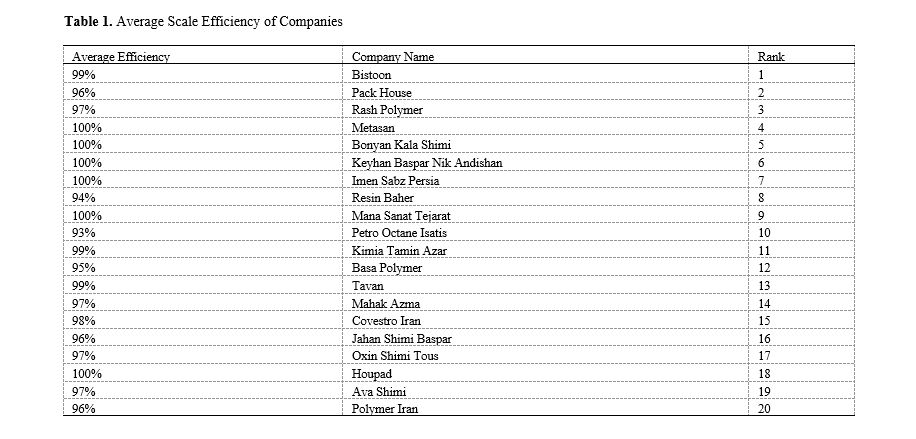Designing a Collaboration Model Among Supply Chain Members to Reduce External Supply Risk in the Oil and Petrochemical Industry Using Game Theory
Keywords:
Collaboration model, supply chain, external supply risk, oil and petrochemical industry, game theoryAbstract
The goal of supply chain management is to improve various activities of the components and levels of a supply chain to enhance the overall condition of the supply chain system. During this process, numerous conflicts and contradictions may arise between the objectives of different components and levels in achieving the overall goals of the supply chain. These disruptions and inconsistencies may gradually lead to a decline in the supply chain's strength and competitiveness. Conflicts may include issues related to pricing, inventory costs, and marketing disagreements. Given its characteristics, game theory is an appropriate tool to create collaboration within supply chains. In recent years, supply chain management has gained significant importance due to the globalization of business markets. A supply chain is a collection of facilities, suppliers, customers, products, and methods of inventory, supply, and distribution control. Supply chain management is the process of effectively planning, implementing, and controlling supply chain operations and is an effective method for maintaining a competitive advantage and improving organizational performance. The shorter product life cycle, the emergence of new technologies, and the expansion of supplier relationships and product development push the supply chain toward increased complexity. With rising complexity, the level of uncertainty and risk within the supply chain also increases. Supply chain risk is a potential event that disrupts the natural flow of materials and information in the chain, leading to disturbances. This article addresses the topic of designing a collaboration model among supply chain members to reduce external supply risk in the oil and petrochemical industry using game theory. Initially, by analyzing relevant data and outputs, the technical efficiency of domestic supplier companies was obtained using Data Envelopment Analysis (DEA) under the assumptions of constant and variable returns to scale. A statistical sample of 15 experts, with both academic and practical knowledge in financial management and experience in stock market operations, was selected for this purpose. Subsequently, game theory was utilized to design a collaboration model among supply chain members aimed at reducing external supply risk in the oil and petrochemical industry. The analysis focuses on selecting the best cooperative coalition and presenting a collaboration model based on the Shapley value. The findings indicate that this cooperative game model provides a structured approach for forming alliances among supply chain partners based on their contributions. By following the specified steps, companies can maximize their profits while enhancing supply chain collaboration.
References
P. R. Kleindorfer and G. H. Saad, "Managing disruption risks in supply chains," Production and Operations Management, vol. 14, no. 1, pp. 53-68, 2021, doi: 10.1111/j.1937-5956.2005.tb00009.x.
A. Goli and H. Mohammadi, "Developing a sustainable operational management system using hybrid Shapley value and Multimoora method: Case study petrochemical supply chain," Environment, Development and Sustainability: A Multidisciplinary Approach to the Theory and Practice of Sustainable Development, vol. 24, no. 9, pp. 10540-10569, 2022, doi: 10.1007/s10668-021-01844-9.
A. Ahmadi Esfahani, A. A. Jokar, and O. Karimi, "Analysis of the Role of Strategic Entrepreneurship and Social Capital in Sustainable Supply Chain Management and Organizational Performance," 2021. [Online]. Available: https://www.sid.ir/paper/899489/fa.
Alizadeh,H ., Ghasemi , M(2023) "The effect of tourists' preferences on the competitiveness of the hotel industry," Quarterly journal of tourism research and sustainable development, 5(3) 25-40, [Online]. Available: https://doi.org/10.34218/IJM.11.8.2020.097
A. Ziegenbein and J. Nienhaus, "Coping with supply chain risks on strategic, tactical and operational level," in Global Project and Manufacturing Management, the Symposium Proceedings, 2018. [Online]. Available: https://www.research-collection.ethz.ch/handle/20.500.11850/84090?show=full.
J. Liu, Y. Xi, and J. Wang, "Resilience strategies for sustainable supply chains under budget constraints in the post COVID-19 era," Front. Eng. Manag., vol. 10, pp. 143-150, 2023, doi: 10.1007/s42524-022-0236-y.
H. Alizadeh and H. Nazapour Kashani, "An Empirical Study of Consumer-Brand Relationships in the Hospitality Industry," Iranian Journal of Management Studies, vol. 16, no. 4, pp. 857-872, 2023, doi: 10.22059/ijms.2022.341453.675074.
G. Tuncel and G. Alpan, "Risk assessment and management for supply chain networks: A case study," Computers in Industry, vol. 61, pp. 250-259, 2020, doi: 10.1016/j.compind.2009.09.008.
H. Alizadeh, B. Kheiri, and A. Heydari, "An Investigation of the Brand-Consumer Relationship Model Based On Digital Marketing in the Hotel Industry," International Journal of Management, vol. 11, no. 8, pp. 1075-1093, 2020, doi: 10.34218/IJM.11.8.2020.097.
D. Waters, Supply chain risk management: Vulnerability and resilience in logistics. Kogan Page Limited, 2018.
F. Karimi, J. Haghighat Monfared, and M. Keramati, "The effect of strategic supply chain management on the performance and orientation of the supply chain by analyzing the mediating role of resilience (A case study of the offshore sector of the oil industry)," Journal of Value Creating in Business Management, vol. 2, no. 3, pp. 61-81, 2022, doi: 10.22034/jbme.2023.367725.1040.
V. Ghazi Zadeh and M. Jamal, "Integration of Supply Chain Management Approaches in the Large Supply Chain Framework Using Multi-Criteria Decision-Making Techniques in SAIPA Company," 2022.
V. Lesinskyi, O. Yemelyanov, O. Zarytska, A. Symak, and T. Petrushka, "Development of a toolkit for assessing and overcoming barriers to the implementation of energy-saving projects," East.-Eur. J. Enterp. Technol., vol. 5, p. 107, 2020, doi: 10.15587/1729-4061.2020.214997.
M. T. Melo, S. Nickel, and F. Saldanha-da-Gama, "Facility location and supply chain management - A review," European Journal of Operational Research, vol. 196, pp. 401-412, 2019, doi: 10.1016/j.ejor.2008.05.007.
C. S. Tang and B. Tomlin, "The power of flexibility for mitigating supply chain risks," International Journal of Production Economics, vol. 116, no. 1, pp. 12-27, 2020, doi: 10.1016/j.ijpe.2008.07.008.
D. Kern, R. Moser, E. Hartmann, and M. Moder, "Supply risk management: Model development and empirical analysis," International Journal of Physical Distribution & Logistics Management, vol. 42, no. 1, pp. 60-82, 2018, doi: 10.1108/09600031211202472.












